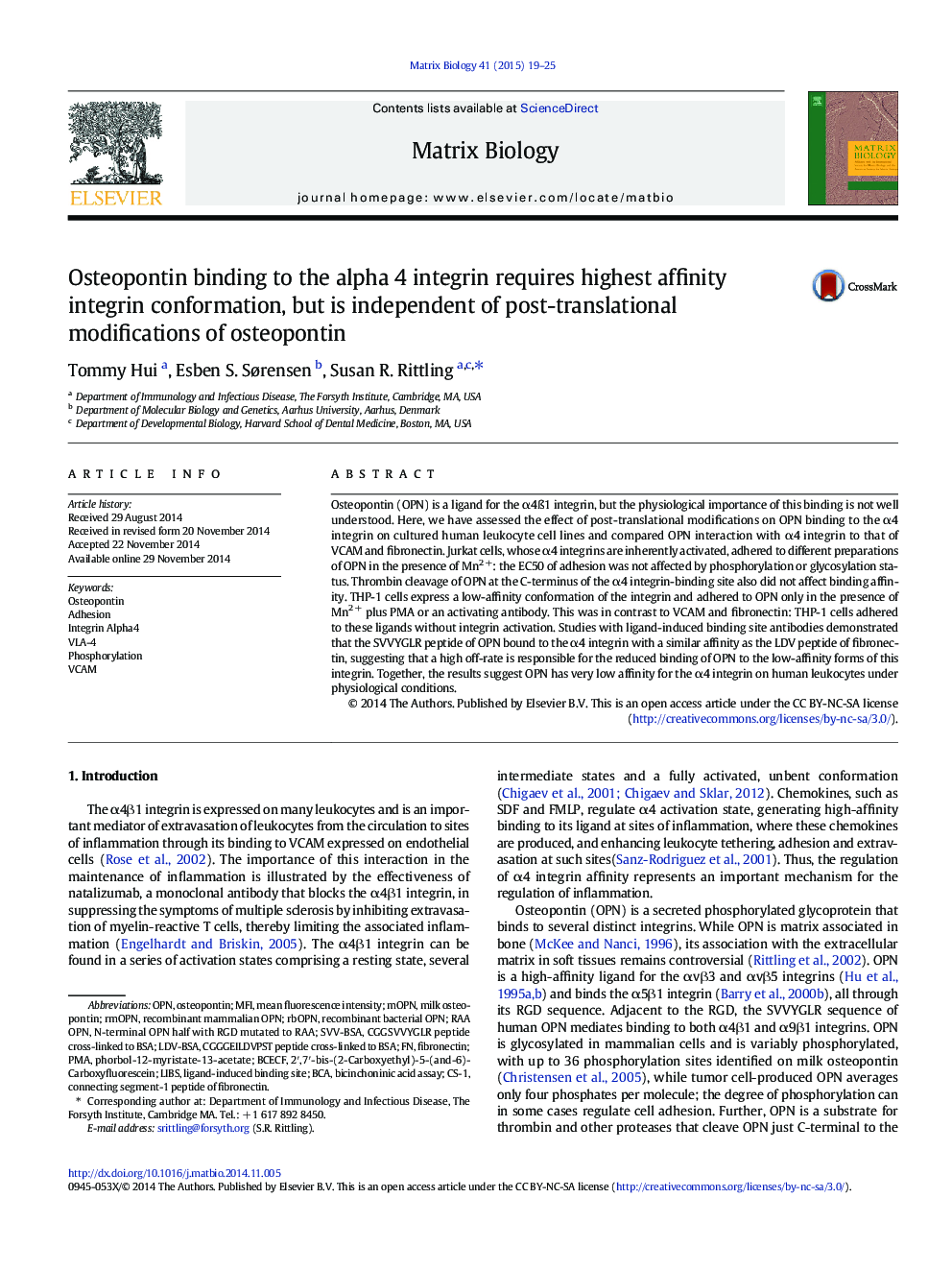| کد مقاله | کد نشریه | سال انتشار | مقاله انگلیسی | نسخه تمام متن |
|---|---|---|---|---|
| 2144741 | 1548015 | 2015 | 7 صفحه PDF | دانلود رایگان |
• Osteopontin binds to the α4 integrin independently of post-translational modification.
• Thrombin cleavage does not affect osteopontin–α4 integrin interaction.
• Osteopontin can only bind to the highest affinity forms of the α4 integrin.
• The data support a high off-rate for osteopontin binding to the α4 integrin.
Osteopontin (OPN) is a ligand for the α4ß1 integrin, but the physiological importance of this binding is not well understood. Here, we have assessed the effect of post-translational modifications on OPN binding to the α4 integrin on cultured human leukocyte cell lines and compared OPN interaction with α4 integrin to that of VCAM and fibronectin. Jurkat cells, whose α4 integrins are inherently activated, adhered to different preparations of OPN in the presence of Mn2 +: the EC50 of adhesion was not affected by phosphorylation or glycosylation status. Thrombin cleavage of OPN at the C-terminus of the α4 integrin-binding site also did not affect binding affinity. THP-1 cells express a low-affinity conformation of the integrin and adhered to OPN only in the presence of Mn2 + plus PMA or an activating antibody. This was in contrast to VCAM and fibronectin: THP-1 cells adhered to these ligands without integrin activation. Studies with ligand-induced binding site antibodies demonstrated that the SVVYGLR peptide of OPN bound to the α4 integrin with a similar affinity as the LDV peptide of fibronectin, suggesting that a high off-rate is responsible for the reduced binding of OPN to the low-affinity forms of this integrin. Together, the results suggest OPN has very low affinity for the α4 integrin on human leukocytes under physiological conditions.
Journal: Matrix Biology - Volume 41, January 2015, Pages 19–25
